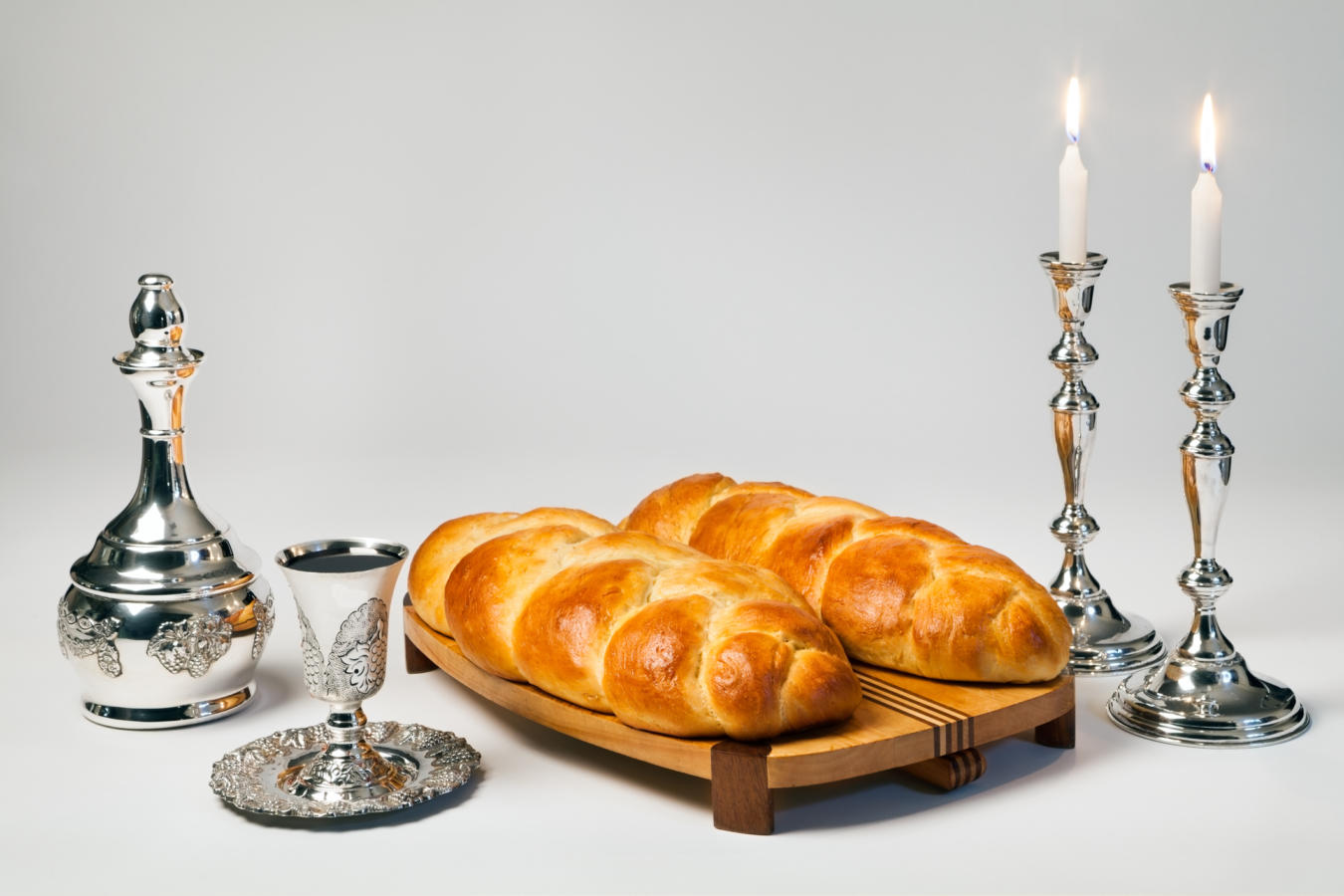While synagogues have traditionally served as the focus of communal Jewish life, the home has always been the most important place for building Jewish identity. This is especially true regarding home observances of Shabbat, the day of rest characterized by numerous prohibitions of various activities as well as many positive commandments intended to make it a day of joy and relaxation.
Many people tend to think of as day full of “don’t do’s“–don’t work, don’t cook, don’t go shopping, don’t drive a car, and so on. But far from simply being a day walled in by restrictions, a Shabbat observed at home is a day immersed in an atmosphere of rest, relaxation, and rejoicing.
At a time when most of humanity only ate two full meals a day, Jewish tradition called for a sumptuous three meals on Shabbat (between sundown on Friday and just after sundown on Saturday) to ensure that one could relax and celebrate with a full stomach. Even if a person had to live in penury the entire week, Shabbat was a day for which they would purchase wine, challot (braided bread loaves), and food for a fitting set of meals. Even if they wore rags during the week, Shabbat was a day for wearing one’s finest clothing. Even if they could not rest a minute because of the need to pursue a livelihood, Shabbat was a day of complete rest and rejuvenation.
In order to enjoy a Shabbat free of household chores, it is traditional to clean the house before Shabbat and prepare all meals in advance, so that the food only need be warmed up to enjoy it (rather than cooked, which would violate traditional Shabbat restrictions). Beginning just before sunset on Friday night, it is traditional to light Shabbat candles, sing Shalom Aleichem (welcoming angels to one’s table), make blessings over wine and bread, to bless one’s children, and to enjoy a leisurely meal characterized by good food, stimulating conversation, singing, and Jewish learning.

Help us keep Jewish knowledge accessible to millions of people around the world.
Your donation to My Jewish Learning fuels endless journeys of Jewish discovery. With your help, My Jewish Learning can continue to provide nonstop opportunities for learning, connection and growth.
After attending synagogue, whether inviting a guest or friend home, being invited to someone else’s house, or sitting down to a meal with one’s family or even alone, it is also traditional to enjoy a full Shabbat lunchtime meal similar to the Friday evening repast. Shabbat afternoon is a time reserved for reading, sleeping, talking, walking, or studying Jewish texts, all activities that we often claim that we never have enough time to do. And before sunset, to ensure three full meals, traditional Jews enjoy a third meal in the late afternoon (either at home or in the synagogue), appropriate individual prayers or synagogue services, and the conclusion of Shabbat.
Because Shabbat is considered a foretaste of the idyllic World to Come, Jewish tradition discourages ending Shabbat at the earliest possible moment. Traditionally determined by the appearance of three stars in the night sky, Shabbat’s departure is marked by the ceremony of havdalah (“division”), which includes blessings over wine, spices or fragrant vegetation, and a multi-wicked candle. Many Jewish communities delay the celebration of the conclusion of Shabbat until later in the evening with a festive gathering known as a melaveh malkah, literally meaning “accompanying the [Shabbat] Queen.” Envisioned symbolically as a queen, Shabbat is escorted away with song and delicacies.
Sign up for My Jewish Learning’s RECHARGE, a weekly email with a collection of Shabbat readings and more to enhance your day of rest experience.



